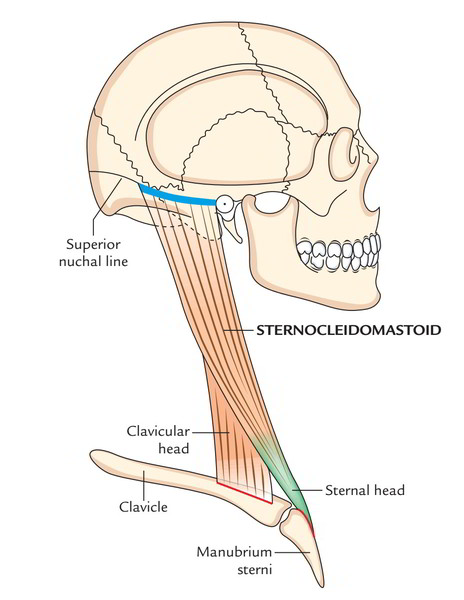Sternocleidomastoid Muscle Anatomy. This muscle binds the skull to the sternum and clavicle. In mammals that lose the clavicle these slips may be further modified to form muscles running from the.

Insertion They insert on the mastoid process which is a large bony protuberance behind the ear. The sternocleidomastoid is innervated by the accessory nerve. Anatomy and function of the sternocleidomastoid muscle The sternocleidomastoid travels indirectly across the side of the neck.
The sternocleidomastoid muscle is a two-headed long bilateral muscle of the neck and is the most visible cervical muscle.
The muscle name sternocleidomastoid is derived from the manubrium of the. It obliquely extends across the side of the neck region dividing the anterior and posterior triangle of the neck. Anterior triangle is delimited by the posterior border of the SCM the. The vestibular area has a close relationship with the SCM motoneurons to improve posture and neck movements.

